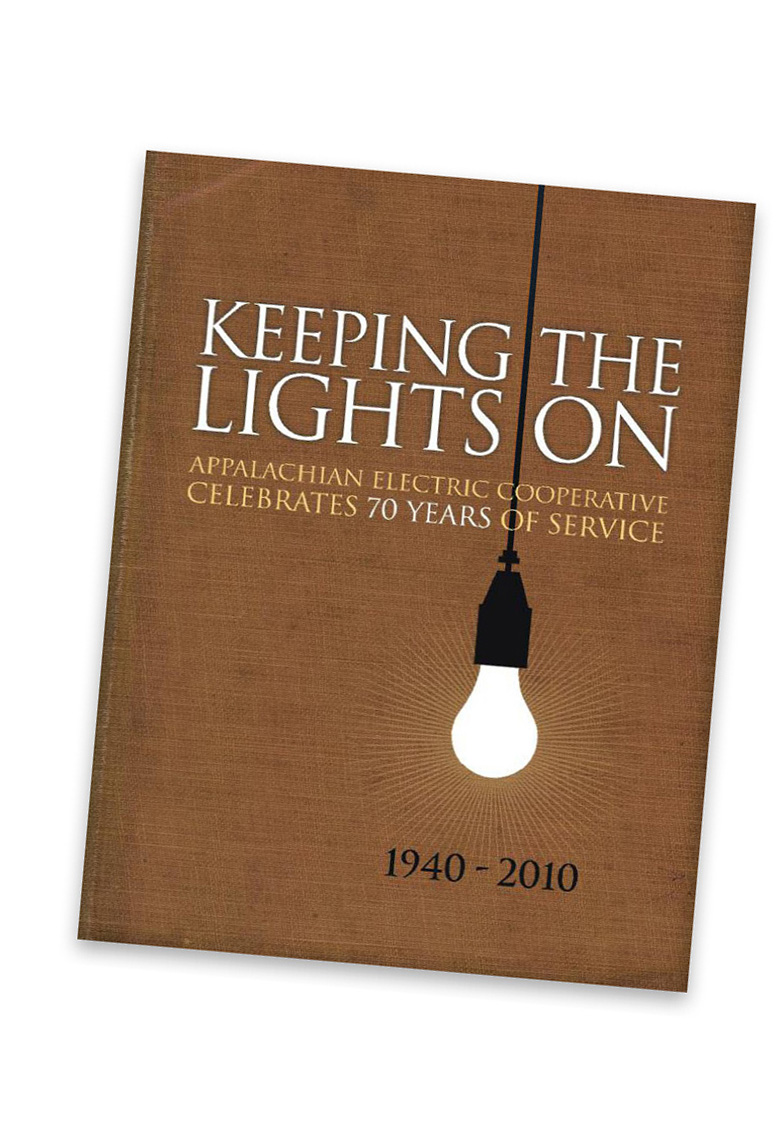Eastern Tennessee was lighting up.
Jefferson City, Dandridge, White Pine and Rutledge had power. And the Tennessee Valley Authority (TVA) was building hydropower dams that would soon supply other towns there and in across the entire Appalachian region.
 Dandridge started out with evening service only, with three blinks at 9:45 p.m. to signal the last 15 minutes. Sometime later, according to Keeping the Lights On, the 70-year history Appalachian Electric Cooperative published in 2010, Dandridge’s municipal utility added four or five hours during the day “to permit housewives to do their ironing.”
Dandridge started out with evening service only, with three blinks at 9:45 p.m. to signal the last 15 minutes. Sometime later, according to Keeping the Lights On, the 70-year history Appalachian Electric Cooperative published in 2010, Dandridge’s municipal utility added four or five hours during the day “to permit housewives to do their ironing.”
But if you lived in the rural areas outside these towns you were out of luck—until the Farm Bureau called a mass meeting for folks in Cocke, Grainger, Hamblen, Jefferson and Sevier counties in September 1939. The guest speaker was an engineer with the Rural Electrification Administration (REA).
County agents in those counties formed small groups of volunteers in the days and weeks that followed. Their job was to “spread the gospel” in the hills and hollers.
They made hundreds of stops at farms, post offices and country stores to sign up members of Appalachian Electric (AEC). They also held community meetings where they showed a film, “Electricity on the Farm,” on a projector plugged into a gasoline generator.
“Interest in rural electrification is about to reach fever heat,” one of the agents wrote in his weekly report. “Everywhere we go, community leaders are very anxious to secure electric service…. Farmers keep asking, ‘What can we do to get something started.’”
With help from U.S. Senator Tom Stewart, the co-op was incorporated in March 1940. Before the board of directors met for the first time that May, Appalachian Electric was negotiating a power contract with TVA.
A $519,000 loan from REA paid for building 243 miles of distribution line and purchasing existing infrastructure from TVA.
On September 1, the co-op began serving 998 members. Today it counts more than 40,000 residential accounts and close to 6,500 commercial accounts along 2,583 miles of line.
To commemorate its 75th anniversary in 2015, AEC interviewed six longtime members, all in their 80s or 90s, about life before and soon after electrification.
Veryl Atchley, a retired high school math teacher, revisited the 10-year-old farm boy in him who delighted in listening to “The Lone Ranger” and The Grand Ole Opry” on the plug-in radio that replaced his family’s battery- powered model. “I’ll never forget being able to listen as long as I wanted.”
Not having to carry a kerosene lamp from room to room at night also came to mind, as did his mother’s embarrassment at seeing the film of soot on the wood stove on the day an electric light first illuminated the kitchen.
“She immediately began wiping it down.”
The very first electric appliance in the house—even before the radio—was a refrigerator. Mary Crawford Gombert, another interviewee, said the same thing. She remembered that it was ordered from Sears, Roebuck & Co. It replaced the wooden icebox that resided on the Gombert’s back porch and held a variety of dairy products produced right there on the farm: milk, butter, buttermilk, cottage cheese. “Mother was always churning.”
Twice a week, her father hitched a team of mules to a wagon and drove to an icehouse in Jefferson City (29 miles northeast of Knoxville) to get a fresh chunk of ice. Gombert and her sisters had the job of emptying the drip pan under the icebox each day.
Buddy Morgan didn’t have to search his memory long to describe one of the best things about getting electricity for a 15-year-old: “Having an electric window fan close to where my bed was. You could finally get some sleep on those hot summer nights.”
E.C. Dearing, a retired electrician who wired close to 1,000 homes in AEC’s service area, remembered getting up before dawn to help his father and brothers round up and milk 42 cows before catching the school bus at 6:30—then milking the cows again after school. “We didn’t stay up much past suppertime, I can tell you!”
“The greatest thing was when we got the electric milkers. After milking cows by hand all those years, it felt like a miracle.”
A 4-horsepower electric water pump improved the milk itself.
“We built a concrete tank to water the cows. Instead of drinking pond water, they could drink good clean water, and they gave more and better milk as a result.”
A.J. Hoffner recalled the day a man canvassing for the co-op pulled into their farmyard in “a nice pickup truck.” His father had died when he was 12, so as the oldest boy, he listened to the man’s pitch and then gladly signed the AEC membership form he presented.
Louise Miller Browning had a more recent memory of AEC’s presence in the rural areas east of Knoxville. It was from the 1980s, when she and her late husband Charles still owned The Wagon Wheel Restaurant in Dandridge.
There had been a big ice storm, and they decided to stay open all night so the linemen who were trying to get the lights back on had a place to get a hot cup of coffee and a meal.
“I guess doing that kind of work in those kind of conditions really works up an appetite, because I’m telling you, those guys could really eat!”
